Video Feature & Web-Exclusive Interview
Musician: STEVE WEINGART
Video: “Smile”
STEVE WEINGART & RENEE JONES DEBUT NEW ALBUM OASIS AT 2018 WINTER NAMM
Steve Weingart’s musical journey began when his parents recognized his gift at the age of three, and sought out the best piano teacher in their home town of Dayton, Ohio. A critical foundation of classical studies followed. It allowed him to appreciate the complex compositions of contemporary artists who would ultimately influence his professional career as a composer and keyboard player. Through his future brother-in-law, Steve was introduced to the compelling music of Chicago, Weather Report, Herbie Hancock and Chick Corea. He knew then—that music would be his life.
After high school, Weingart was awarded a full scholarship to The College Conservatory of Music in Cincinnati, Ohio—where he was introduced to the world of improvisation. It was the beginning of a professional career, spanning virtually every musical possibility, as he began getting noticed around the local jazz scene. He spent a few years touring the world with Dave Weckl’s band in addition to writing and co-writing songs for numerous albums including Transition, Perpetual Motion, Live (and Very Plugged In), and Multiplicity.
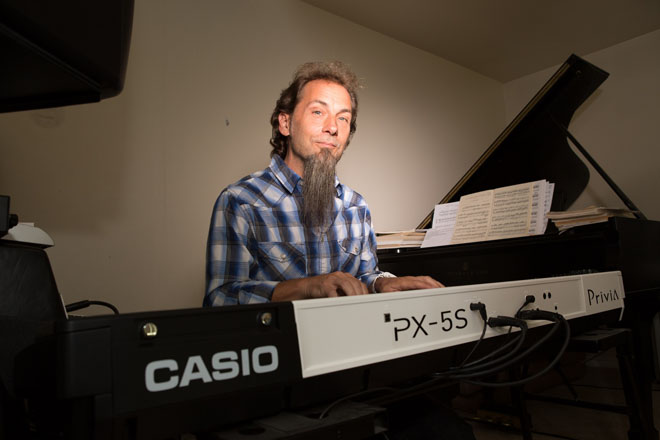
Weingart became widely known for his work with Steve “Luke” Lukather (Toto) on El Grupo, then touring Japan and Europe to wide acclaim and releasing El Grupo—Live. Luke invited Weingart to play a few tracks of Ever Changing Times—which led to becoming Luke’s live performance Music Director. After successful touring they returned to the studio to record Luke’s All’s Well That Ends Well (2010) and Transition (2013). The follow-up tours to both albums included Weingart’s wife, Renee Jones, on bass and vocals, and Eric Valentine on drums.
Other notable projects of Weingart with Luke included a tour of Asia in the spring of 2010 with Soul Bop (Randy Brecker, Bill Evans, Robben Ford, Darryl Jones and Rodney Holmes), the 40th Anniversary of The Baked Potato jazz club (Vinnie Colaiuta and Tal Wilkenfeld), an autumn European tour with Goodfellas (Kenny Aronoff, and Fabrizio Grossi), and a January 2011 New York City appearance with Toxic Monkey (Bill Evans, Will Lee and Keith Carlock).
Weingart’s 2011 Dialogue showcased some of his best instrumental composing, co-written with Jones, who played bass on the entire project. Other notable associations include co-producer and drummer, Simon Phillips (Toto, Jeff Beck, The Who, Stanley Clarke).
Weingart and Jones’ 2012 Observatory was a potent mixture of compositional risk, a refined sonic palette and superb musical craftsmanship. Their new album Oasis evolved after working with Casio—a leader in keyboard technology. We talked with Steve Weingart about his passion for composing, playing live, the musicians who influenced him, and the importance of music education.
STEVE WEINGART Web-Exclusive Interview with
M Music & Musicians magazine publisher, Merlin David
How did the new album, Oasis, evolve?
It came about through a combination of events. Casio had developed the new GP-500 Grand Hybrid Piano, and I had an opportunity to play it. It was such an engaging and authentic piano-playing experience, it compelled me to practice as I did when I was younger.
What was so compelling?
I felt the desire to explore the acoustic piano again—after so many years of playing electric instruments in rock, fusion and progressive bands. But the most decisive part was being invited by Casio to give a master class and perform at the Museum of Making Music in Carlsbad, CA (near San Diego) to premiere the GP-500 at the opening of the Casio exhibit. On planning the repertoire for the performance, I thought it would be fun to have my wife, Renee, sing a few tunes with me. When we performed, the response was so overwhelming that I decided this is something we needed to share with everyone. That pretty much decided the direction of Oasis.
Did you compose all the music?
When it came to composing and choosing the material for the album, we decided to record a few covers that had personal meaning to us. The rest of the music is original. Our goal was to model the feeling and pacing after one of our favorite albums, Nancy Wilson/Cannonball Adderley [Capitol, 1962]. Both Renee and I love the sweetness and innocence of that period of music, so we tried to spin in that direction.
Is there a song you are especially glad made it onto this album?
Renee may have another answer, but for me the song “Cruising Down the River,” even though it is a cover, has special meaning. My parents always liked that song, and on a recent visit home I heard them singing it. It was sweet to hear them singing it as I imagined there must be a lot of memories for them in that song. I felt it would be a fitting tribute to perform it on the album. When Renee sang it, it really felt special and unique to me.
Tell us about one of the other songs?
“Ray & Ruth” is dedicated to the memory of a sweet older couple, our neighbors in California. They had an amazing history and were always so happy and upbeat, positive people. Renee and I would see them out strolling in the neighborhood quite often, and their pace and demeanor were something that originally inspired this piece.
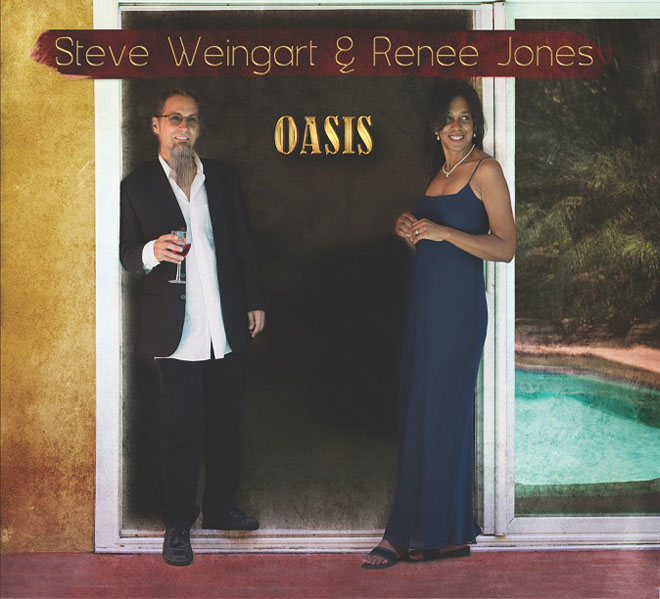 Tell us about your creative process.
Tell us about your creative process.
I’d say I’m a little more a composer than a songwriter. I am always humbled when discussing my abilities in composing and songwriting. There are so many masters throughout our history, and there is so much yet for me to learn and experience. I have always been interested in making up songs—starting when I was five years old. I have never formally studied composition, but have always studied (and still do) composers. I still read and research as much as I can.
How did you compose for this album?
I knew what I wanted the final presentation to represent—based upon our performance at the museum. Having that idea, I simply sat down at the Casio GP-500 and began improvising. I was able to record myself, go back and listen. I would then take the good bits and develop them. It was quite challenging because I have never written for solo piano. A lot of my composing up to this point has involved a band of some kind. The presentation of solo piano required almost all new thinking to me with my left hand in the accompaniment function. This in turn, created new ideas and melodies and chord development. In almost all the songs, I had to at some point stop myself and let the music live and breathe—otherwise I’d still be composing. (Laughs) It was a very interesting journey, and as things evolved, I found myself really enjoying this new direction. It really has been, and continues to be, surprising to me. I feel a full circle effect—since I started out as a classical pianist.
Who inspired you to compose music?
This may seem like an eclectic response, but the short list includes Chopin, Beethoven, Maurice Ravel, Claude Debussy, Alexander Scriabin, Dmitri Shostakovich, George & Ira Gershwin, Bill Evans, Wayne Shorter, and probably the most influential would be Joe Zawinul.
Give us some examples of specific songs.
A good example of Zawinul’s influence can be found on “The Stafford Stomp.” Joe could play blues and swing like a demon with his left hand. George and Ira Gershwin were a big songwriting inspiration to both Renee and me on songs like “Second Thoughts…” and “Whatcha Wanna Do?” Ravel, Shostakovich and Debussy’s influence were a big presence in the development of “Reflections” and “Daydream.” Another specific example would be in the arranging process of Debussy’s influence in our version of Charlie Chaplin’s “Smile.”
What composing tip would you like to offer?
I’ll preface this with the caveat that I never formally studied composition. With that in mind, the best advice would be: don’t be afraid to experiment and explore. Sometimes even mistakes are a great thing to have happen. I learned about experimenting and exploring in theory many years ago—by reading interviews in magazines and then seeing videos. The depth of the concept didn’t really strike me in reality until I thoroughly experienced it and realized it in hindsight.
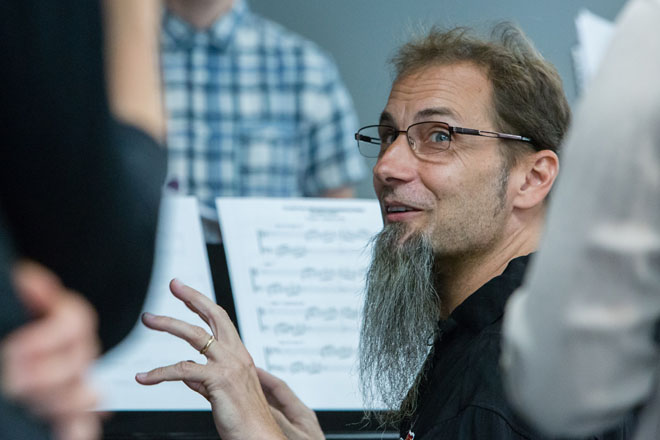
Give us an example.
In my experience as a teacher and counselor over the years, I’ve seen many people evolve from being freed of the fear or free from rules in experimenting and exploring. There is no one way of accomplishing the mission. We all are different from one another in our thinking and perceptions. Although educational institutions have developed studies in analysis, methods and processes over the years, the best we can do for ourselves is to learn as much (or as little) as necessary to spark inspiration. When it comes to music—there is no right way or incorrect way.
Tell us one experience where something unique inspired a composition.
“The Stafford Stomp” is a favorite and a challenge to perform. The fun stories I’ve heard about Grandpa Stafford from Renee’s family, and what I imagined it must have been like being there, made this song what it became. Music was and is a strong presence in Renee’s family. Her grandparents always made sure they had popular records of the day when the family would visit them. Renee showed me how he used to dance, and told me about things he did that made them laugh. That little slice of fun in their memories sent my imagination to family gatherings, friends hanging out and a piano player in the corner grooving hard. (Laughs)
How does co-writing inform your music?
Co-writing is always a different experience for me—with each song and person. Writing with Dave Weckl, who has a strong feeling for what the groove should be, we’d spend time together just improvising with ideas. A lot of songs I wrote with him came about in that manner. Sometimes, even I would suggest some rhythms or turns in phrasing. He would often sing me phrases or ideas. After we jammed with some ideas, we’d experiment and develop them. He also has a great sense of organization. He’s able to listen to sections of a piece and arrange the flow from start to finish. I learned a lot from him.
Tell us about writing with Steve Lukather?
When it came to collaboration with Luke, it was an entirely different approach. We’re both playing melodic, chordal instruments, so it took giving space and sometimes letting one guy run with an idea. When something would come together, he’d occasionally ask me to add some adult chords—one of my favorite Luke phrases (laughs) to add a different spice. In some cases, that would lead to another section of a song.
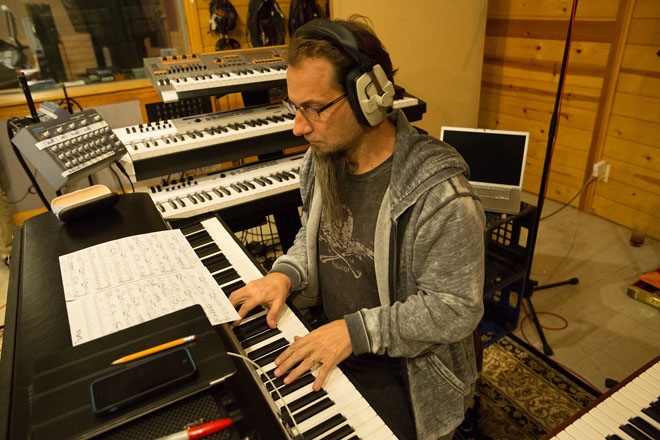
Sounds like a nice collaboration.
My main plan, with whomever I worked with, was to quickly find the balance of coming forward with ideas and listening to what was coming my way. In the ideal situation, it’s a very conversational experience.
Which instruments/equipment can you not live without?
As I’ve progressed in composing, I’ve started relying more on my computer. I’ve written songs in the past with pencil and paper, but in an improvisational approach to composing, that can be very time-consuming and stifling. My first computer, I think it was 1995, was an Apple. At that time, one of the only programs available was MOTU’s Performer (before Digital Performer came out). It’s a great tool and worked so well for me back then. I’ve grown with the program as it’s progressed. To this day, I always use it to write because I know it so well and it’s really convenient. When it comes to getting the ideas into Digital Performer, I use my Casio GP-500 or the Privia PX-5S. I recorded our album, Oasis, in Digital Performer with the GP-500, and it was a great experience.
What is so special about the PX-5S?
The Casio Privia PX-5S is a keyboardist’s live performance and studio instrument dream in reality. It is simply one of the best sounding and best feeling instruments I’ve played. I can rave for a long time about the internal sounds and its programming flexibility. In addition, the MIDI/USB programming potential in this keyboard far exceeds typical use. I like that they planned it that way because its future with DAWs, plug-ins, iPad apps, etc. is not finite. It is seriously a pro musician’s instrument that can also be enjoyed and easily used by beginners.
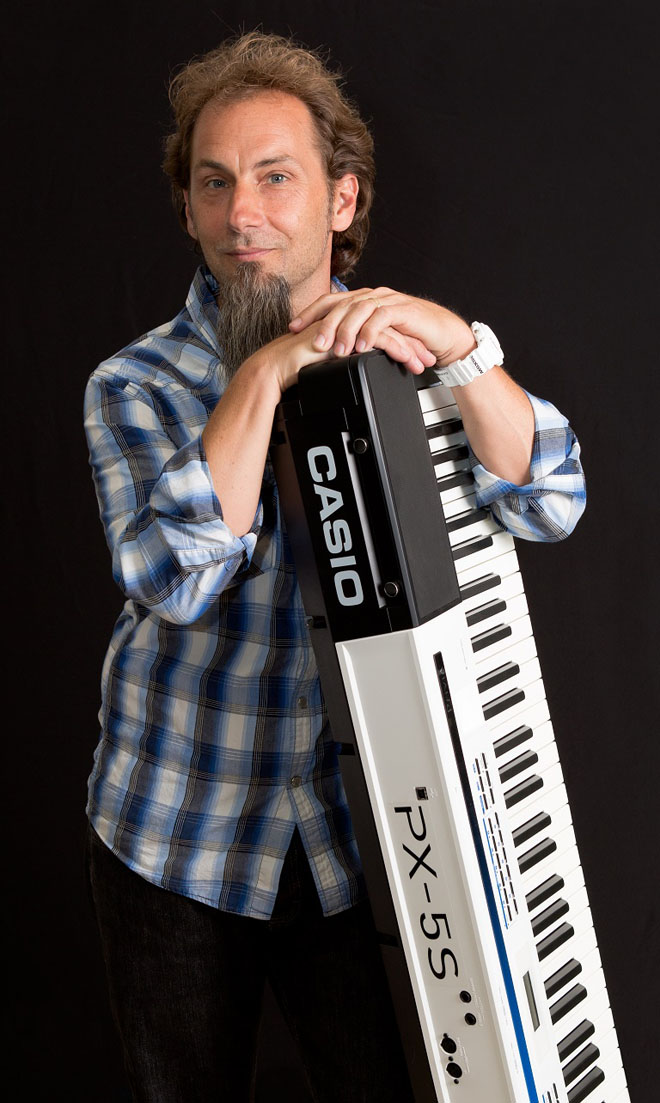
Are some musicians surprised about the expertise level of Casio keyboards?
I’m always hearing people tell me they didn’t know Casio is such a contender on a professional level. Admittedly, when I was invited to audition the PX-5S at a NAMM show a few years ago, I didn’t expect what happened. A big “thank you” to Hiroki Sato and Mike Martin at Casio for the invite. I always enjoy witnessing the surprised reactions from people in clinics and workshops. I’m hopeful that they’ll be inspired to continue on their music journey.
Is music education important?
Music education is super important. I was fortunate to have had really good, patient and nurturing teachers in my earlier years. There is a special element in the great educators that’s really inspiring. When I went to CCM [University of Cincinnati College-Conservatory of Music], I was lucky to meet one of my teachers, Pat Harbison. He’s definitely got a big measure of that special element. I credit him for opening my eyes to jazz theory and the true beginning of my improvisational journey. Everything about that time period and the environment he created was exciting, progressive and forward thinking. It was Pat that made music fun and interactive for me—more so than my previous experience of rote repetition and technical practice—not that there’s anything wrong with that. (Laughs)
Were there others who helped you learn?
My friend, Victor Wooten. He’s another cat that’s got that special element—in a big way. When he asked me to do some tours with him a few years ago, I had no idea it would be such a learning experience—as well as a fun and burning playing experience. I knew him as an amazing bassist, but he’s much more than that. I’d consider Victor a modern day renaissance man. He can do a lot of things, including teaching, and do it all proficiently, at a very high level. He’s developed Wooten Woods outside of Nashville, TN where he offers among many other things: nature, music and music theory camps. Victor asked me to be a teacher/counselor on a couple of occasions. In each case, I ended up as much a student as a teacher. I love a personal and musically spiritual approach. I appreciate the developed scholastic institutional approach. In the art of music, I believe there are so many ways to approach it and touch a person—we shouldn’t limit ourselves. Victor has definitely taken it to another level in his camps.
Top 5 Musicians who inspired you to become a musician?
Edvard Grieg, Joe Zawinul & Wayne Shorter of Weather Report, Chicago, Herbie Hancock, Steely Dan.
Top 5 favorite albums of all time?
Nancy Wilson/Cannonball Adderley (1962) – Nancy Wilson & Cannonball Adderley
Black Market (1976) – Weather Report
Mysterious Traveller (1974) – Weather Report
Cookin’ with the Miles Davis Quintet (1957) – Miles Davis
Relaxin’ with the Miles Davis Quintet (1958) – Miles Davis
The Chicago Transit Authority (1969) – Chicago
What PRO (Performing Rights Organization) are you with?
I’m with ASCAP. They definitely help keep track of my compositions and they are an invaluable resource in music biz questions and concerns.
Tell us a “pinch me” moment where you said, “Wow, this is really happening to me!”
This has happened a lot over the years, with many amazing musicians. I count myself very fortunate. And man, have I had some experiences. (Laughs) I recently played in Dave Sanborn’s band, and we did a short residency at the Blue Note in Hawaii. I couldn’t help but remember playing his music, a lot, in my younger days in Cincinnati. During our shows in Hawaii I’d look up and see him smiling, and that gave me a big charge.
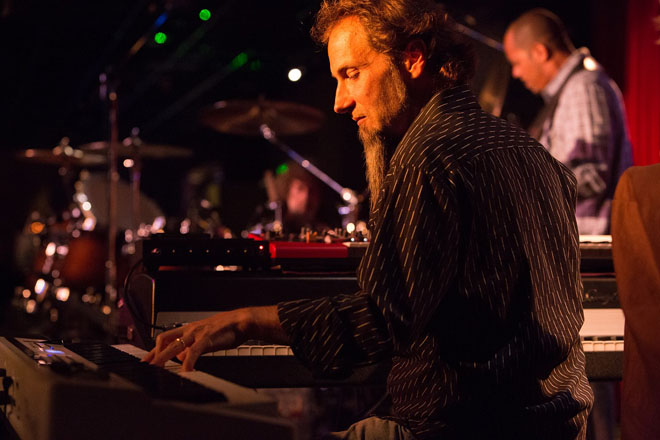
Why is performing in Asia so special—especially for jazz musicians?
There is simply a deep appreciation and respect for musicians and music. I’m always so grateful to experience being in that region of the world for this very reason.
Do you remember the first time you heard one of your songs on the radio?
I remember recently Renee and I heard our song “Time Will Tell” from our Observatory album on an indie internet station. It was really cool, and a fun thing to hear it pop up unexpectedly.
I’d had a few previous experiences hearing some of my tunes or collaborations on the car radio. A couple of times I remember thinking as I was driving “Hey, this sounds really familiar!” (Laughs)
Best advice someone has given you.
Whenever the subject of advice comes up, I always think of my college teacher, Pat Harbison. It was through him that I heard the legendary quote from Charlie Parker: “You’ve got to learn your instrument. Then, you practice, practice, practice. And then, when you finally get up there on the bandstand, forget all that and just wail.” It took me a long time to make sense of what Bird meant in that statement. Even now I’m not sure I’ve actually come to the full meaning. I think there’s more to it than what’s at the surface. To me, ‘learning your instrument’ never seems to reach completion. I tried to expand on his thoughts, replaced the word practice with study, compose, listen, read, etc. It’s easily a lifetime in curiosity and development, but I think we do the best we can with what we’ve got at any point in time.
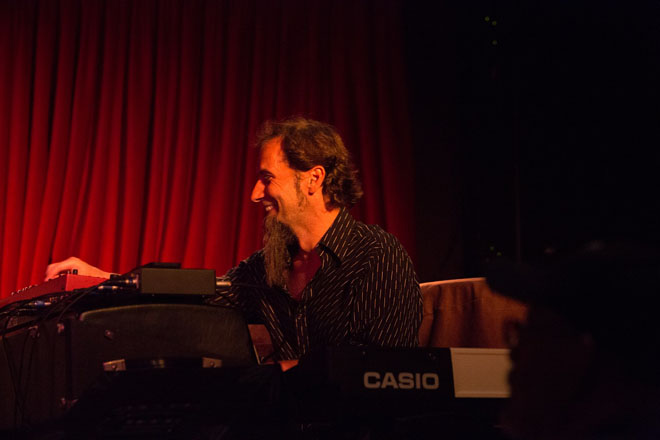
Best advice you’d like to give upcoming musicians.
Charlie Parker’s advice is a great starting point. If I were to add to it, I’d say: learn and get really good at running music software on computers. Also, look at the modern day music field in its entirety. It’s grown considerably over the years, and there is a lot available in terms of direction and career. These days, there are seemingly no limits and everything is easily acquired online. YouTube is a huge resource.
Any advice you’d give your 17-year old self?
One that’s served me well is remain curious and open-minded. There are no boundaries, no end to the journey in music. Just last summer I took an “Instrumentation & Orchestration” course at UCLA. I learned so much in taking that class that in the experience—it piqued my curiosity in this field even more than before. I never could have imagined that interest when I was younger.
What’s next?
Renee and I are planning to give performances with the music from Oasis and other songs—as much as we can. Playing for and interacting with audiences is the best. I don’t think that will ever get old for either of us. We also plan to follow up this album with another similar kind of musical presentation. I’m thinking that we may expand the instrumentation in the next recording.
Where can new fans get more info and stay updated?
http://weingartjones.com/wj/
https://www.facebook.com/steve.weingart.music
https://www.facebook.com/Steve-Weingart-135151434074/
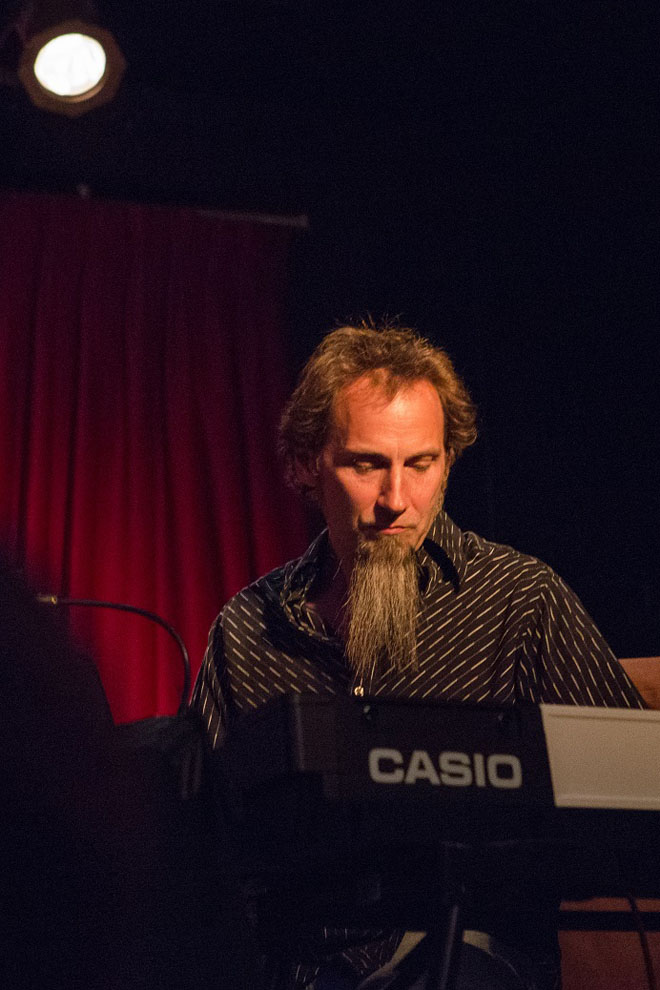



comment closed